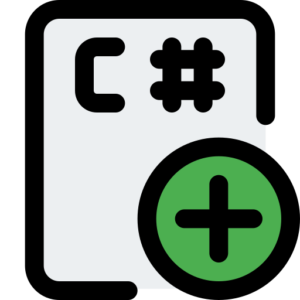Thread Creation and Management
In C# programming language, thread creation and thread management is done by following many processes. In C# programming, the programmer can create and control many types of threads as per the requirement, such as Thread class, Task class, for asynchronous programming and use thread pooling mechanism as per the requirement.

So let’s understand thread creation and thread management in C# programming language better.
Thread creation in C# programming.
In C# programming language, the Thread class provides you direct control in thread creation and management.
Creating a basic thread in C# programming language.
To create a thread in C# programming language, you use the Thread class from the System.Threading namespace.
Thread creation example in basic C# programming language.
using System;
using System.Threading;
class Program
{
// Here Method to be executed by the thread
static void Displayinfo()
{
Console.WriteLine(“\n This Is A Simple C# Program Thread”);
}
static void Main()
{
// Let Create a new thread and start it
Thread thread = new Thread(Displayinfo);
thread.Start(); // it Start the thread
// It Wait for the thread to finish execution
thread.Join();
}
}
Here in the above example.
We define a class method Displayinfo. Which will be executed by the thread.
Where a thread object is created with the target method (Displayinfo), and then the Start() class method is called to start the thread execution.
Where the Join() class method blocks the main thread until the created thread completes its task.
Thread Pooling in C# Programming Language.
Instead of manually creating and managing threads in C# programming language, you can use the ThreadPool class for thread management. Especially in some particular conditions where you need to execute short lived tasks in large numbers.
Example of ThreadPool in C# Programming Language.
using System;
using System.Threading;
class Program
{
// Here This Method to be execute by the thread pool
static void Displayinfo(object state)
{
Console.WriteLine(“\n This Is The Simple Thread Pool Example”);
}
static void Main()
{
// It Queue a task to the ThreadPool
ThreadPool.QueueUserWorkItem(Displayinfo);
// Let the main thread sleep so the background thread can run
Thread.Sleep(999);
}
}
Here the ThreadPool.QueueUserWorkItem() class method is used to queue the method to be executed by the thread pool thread.
Here the Displayinfo class method will be executed by the available thread from the pool.
Here Thread.sleep(999) is used to stop the main thread, which allows the background thread to terminate before the program exits.
Handling Thread Cancellation in C# Programming Language.
In C# programming language, a thread or task may need to be cancelled before it completes its task. Here, C# programming language provides you with the C# cancelToken mechanism to support cooperative cancellation.
Task Cancellation Example in C# Programming Language.
using System;
using System.Threading;
using System.Threading.Tasks;
class Program
{
static async Task TestTask(CancelToken token)
{
for (int p = 0; p < 10; p++)
{
if (token.IsCancellationRequested)
{
Console.WriteLine(“\n The Task Is Cancelled.”);
return;
}
Console.WriteLine($”\n The Task Is Ativelly Running {p}”);
await Task.Delay(400);
}
}
static async Task Main()
{
CancelTokenSource cts = new CancelTokenSource();
Task task = TestTask(cts.Token);
// Cancel the task after 2 seconds
await Task.Delay(1800);
cts.Cancel();
await task;
}
}
The cancelTokenSource allows us to request the cancellation of a task. The task periodically tests the cancelToken to see if it should exit early or not.
Thread Safety Considerations in C# Programming Language.
When managing threads in C# programming language, some basic thread-security related considerations must be followed.
- Race condition – In C# programming language multiple threads access shared resources simultaneously.
- Deadlock – In C# programming language threads wait for an indefinite time for each other to release resources.
- Thread starvation – Some particular condition where threads are not getting enough CPU realtime due to priority or locking problems.
Thread Creation Management in C# Programming Language Conclusion.
- In C# programming language, thread creation and management can be done by following several mechanisms.
- In C# programming language manual thread is created using Thread class for more program control.
- In C# programming language threadpool is used for more efficient use of threads while executing small tasks.
- Use Task Parallel Library (TPL) for simple asynchronous programming in C# programming language.
- In C# language, synchronization is done using locks, semaphores and other thread synchronization tools to avoid problems like race conditions and deadlocks.












